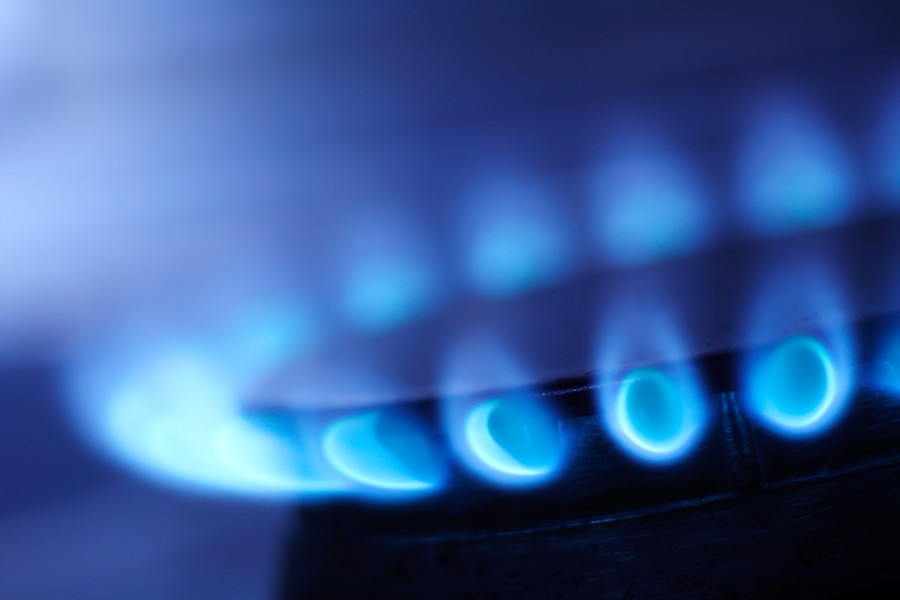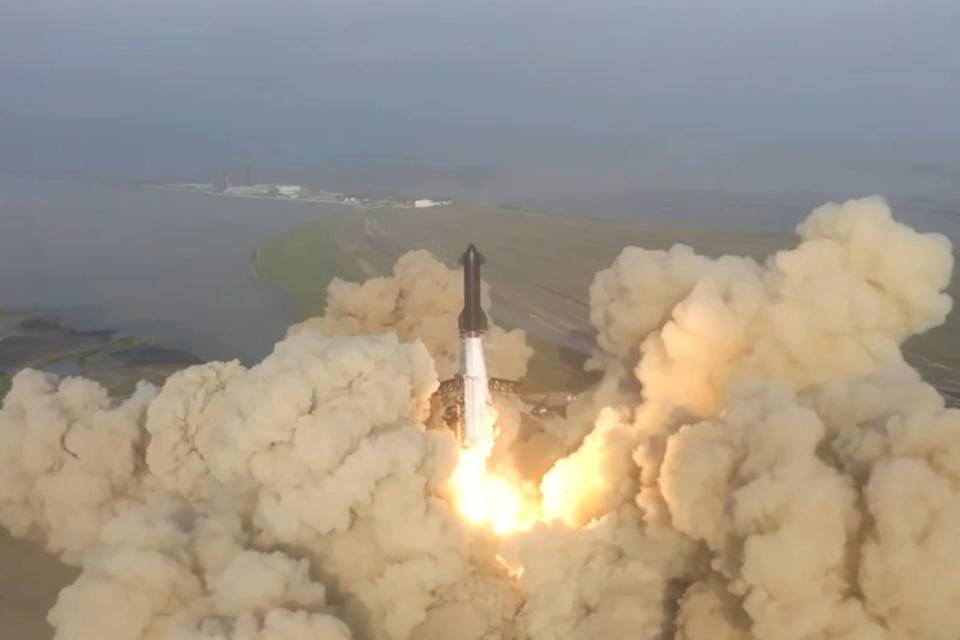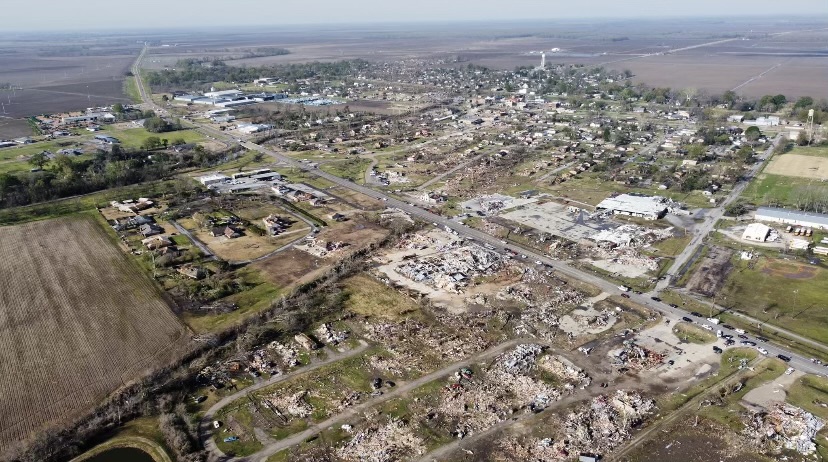All,
Warning: My note this week is longer than usual, which many already tell me are too long. It is about the changing nature of the US natural gas market. Natural gas is a key driver in the US economy and as the primary feedstock for nitrogen fertilizers – and thus relevant to what we do – but not super related to leadership. I am a geek and think the topic is fascinating, but if you’re here for leadership inspiration, you may want to skip this week’s geek-fest. My second warning is that I’m not an expert. I may have gotten some things wrong despite my best efforts. I tried to include sources where I could and will ask that readers who know more than me help everyone by pointing out the errors if you find them.
I discovered the issue as I prepared to give a talk to the Nashville Economic Council several weeks ago. I have followed the gas markets since my days in the explosives and mining businesses, but Russia’s invasion of Ukraine and the recent run-up in natural gas and fertilizer prices renewed it. So I used the talk as an excuse to spend some weekend time doing some research. What I found shocked me.
The bottom line: North America is quietly going through a profound and lasting shift in its energy profile – a shift that will impact nearly every American and will have tremendous implications for our farmers, our environment, and our economy. Yet no one is talking about it.
Since 2008, the fracking boom has provided the United States a significant cost advantage over much of the industrialized world in natural gas, something that has helped it to increase manufacturing, eliminate our dependence on imports and dramatically reduce greenhouse gases, as natural gas has replaced coal as our nation’s source of electrical power. While that advantage continues today largely due to Russia’s invasion of Ukraine and the dramatic reduction in gas flows from Russia to Europe, America’s energy landscape has shifted dramatically. And it is unlikely to reverse anytime soon. Given that 51% of US households are heated by and 37% of our electricity is produced, and tens of billions of dollars of goods are produced – including fertilizer for our farmers – from natural gas, the implications are significant for every American.

Background and Recent History.
Natural gas (or “dry gas” in industry terms) is both a target of drilling and a byproduct of oil (“wet gas”) production, with approximately 50% of all wells producing both oil and natural gas. When drillers plumb the depths for oil and get both wet gas and dry gas, they must do something with the natural gas. Ideally, they capture and sell it, but this is more difficult than it sounds, as natural gas is…well…a gas and takes up enormous space. The easiest way to transport gas is to pipe it. But building pipelines is incredibly expensive; thus, the first pipelines focus on areas with close gas and high demand (high population centers/industry). This is why many of the original gas pipelines focused on connecting the gas fields of the eastern US with the major population centers along the east coast and from the Gulf of Mexico north to the upper Midwest.
Stranded Gas
What do you do if you have a large supply of natural gas in an area of the country that has relatively little demand for it and you can’t transport it via pipeline? In these situations, your gas is “stranded.”
If you have stranded gas and you are drilling for oil, your main job is to get rid of the gas, often by flaring it off. Obviously, this is not ideal, from both environmental and economic perspectives. Your next best option is to convert it into something else that can be transported easily. Electricity is a great option – you can build a power plant and ship the electricity over the grid. Yet there are limits to that too and thus, your next option is an ammonia plant, as natural gas is the primary raw material used to produce ammonia. Indeed it requires approximately 33 million British thermal units (mmBtu) to produce one ton of ammonia. Ammonia can then be shipped via truck or rail or boat anywhere in the world. About 80% of the ammonia produced by industry is used in agriculture as fertilizer, either straight or as urea, UAN or ammonium nitrate. The end result is that somewhere between 70-90% of the cost of nitrogen-based fertilizers is natural gas, via ammonia.

The result is that historically, many older ammonia plants and their associated fertilizer plants are located in places with lots of stranded gas – Cheyenne Wyoming, Carseland, Canada, Trinidad and Tobago, and the far reaches of Russia. There are also a lot of ammonia plants in Louisiana to take advantage of all that gas coming from oilfields in Texas, Louisiana, and the Gulf of Mexico.
With the fracking boom in the U.S., the number of pipelines has grown as well. In the eastern US, however, much of the U.S. is connected to a pipeline, getting piped over much of the eastern half of the country. With lots of cheap gas following the fracking boom, pipelines have proliferated and much of North America’s natural gas is now connected. Between 2008 and 2020, the U.S. added over 400,000 miles of natural gas pipelines. Thus, these formerly “stranded” gas fields are no longer stranded. The price of the gas at those fields now equals the North American price, less transportation costs. This means you can take gas and do all sorts of things with it, like build natural gas power plants.

As a result of all the new pipelines – and here’s the key – North America moved from having pockets of stranded gas to being a continent of stranded gas.

The impact has been enormous for the US on several levels. First, our gas has been exceptionally cheap relative to Europe and Asia and, overall, the cheapest form of energy. Thus, we’ve seen a huge growth in natural gas power plants and additional ammonia and fertilizer plants.

If you are power provider, you can spend less capital to quickly build a natural gas generation unit and avoid an environmental fight, you are going to do it every time.
The fight over liquified LNG exports
Between 2010 and 2012, the gap between the US and Europe and Asia grew.

By 2012, the natural gas industry began pushing to build liquid natural gas export facilities. Industrial and fertilizer groups opposed them, but the pressure grew and the government approved the US’s first projects in 2012. Natural gas plants are massive, complex and insanely expensive, costing anywhere from $20 Billion to upwards of $54 Billion (not a type-o).
The profit prize was worth it, in October 2021, a theoretical trade on a cargo of US LNG arriving in Asia in December would have netted a margin of $21.64/mmBtu. A standard vessel carrying 165,000 m3 of LNG, equates to a profit after transport costs of $77 million…in a single shipment!

The U.S.’s first LNG export terminal came online in 2016. Since then, the US has moved from an importer of natural gas to the world’s largest exporter. By the time the Golden Pass LNG plant comes online in 2024, the US will be able to export 16.3 billion cubic feet per day or nearly 20% of our current natural gas supply. And with Russia’s invasion of Ukraine, Germany has signed deals with Canada and the US to build additional capacity. These are multi-billion dollar, multi-year agreements that will lock Germany into buying North American gas for potentially decades.

The bottom line is that North American gas is no longer stranded. We are moving to a point where, unless we expand production greatly (which we are), the price of natural gas in North America will move towards the global price of natural gas, less LNG conversion and transportation costs (which, again, are large). This is exactly what has happened over the past several months. American natural gas has moved from a historic price of between $3 – $4 MMBtu to between $9-$10 MMBtu.

This has been hidden by all the talk of Europe’s soaring natural gas prices and the price of gasoline at the pump. But the impact is significant and – more importantly – likely to be permanent. You don’t build a $20 Billion facility to do anything but run it at full capacity for decades.
Note: Since I started writing this a few months ago, the U.S. price of natural gas has dropped significantly. The reason: a fire at one of our larger export facilities! This tells you the market impact of a single plant on the US price for natural gas.
What is the impact?
Inflation – as far as natural gas is concerned – is likely to be permanent.
Heating Bills – 51% of US households are heated with natural gas. The price this winter is going to shock many people.
Energy Bills – 37% of US energy is now produced with natural gas. The prices are already shocking people.
Increased greenhouse gas emotions – An estimated two-thirds of the U.S.’s reduction in greenhouse gas emotions over the past 15 years is due to natural gas replacing coal as the main source of electrical power generation (yes, fracking helps reduce global greenhouse gas emissions). However, increased gas costs have the very real potential to shift the energy equation in favor of coal. This could have a profound impact on the US’s overall carbon footprint should our energy grid tilt back to coal longer term due to the cost increases in gas.

Increased gas production — Obviously, with the increase in prices, US gas producers have a greater incentive to increase production, and we’ve seen that. Indeed, US gas production hit an all-time high earlier this fall even while US oil production remains below its pre-pandemic levels.
More gas pipelines — As natural gas production ramps up, the pipelines to move it need to keep up as well. Thus, expect more fights over new pipelines in the coming years, though most pipelines run through Texas to the Gulf which has less opposition than any line running along or to the east coast.
Increased manufacturing costs: Companies that invested billions in manufacturing facilities based on the assumption of cheap natural gas are watching their investments be put at risk. This has not impacted them yet, as prices for fertilizers have gone through the roof. But when the Russia/Ukraine conflict comes to an end and the fertilizer plants of Europe turn back on (assuming they turn back on), the price of fertilizer may ease, but the price of the inputs is far less likely. This will put the long-term profitability of some fertilizer facilities in a squeeze.
Increased cost of production of US-produced nitrogen fertilizers. It will also impact the availability and pricing of ammonium nitrate as a fertilizer, as it will be competing against surging industrial demand.
The impact on fertilizer pricing remains more difficult. Fertilizer is a global market and moves around. Russia continues to export. What is happening now is that Russia has cut off gas supply to Europe and Europe’s NG price has skyrocketed. This has made ammonia and fertilizer production prohibitively expensive, shutting in nearly 12 million metric tons of production annually. That has driven fertilizer prices up globally, despite three new facilities coming online over the last year in India, Indonesia, and Africa.
The real question is whether the increased prices for natural gas will spur more drilling and whether drilling can meet demand.
Short term impact:
Because the gas between Russia and Europe has been largely cut and the skyrocketing cost of natural gas globally, the US is going to export everything it can in an alternative form of energy. Ammonia, urea, UAN headed to Europe to replace all the plants that are shut down due to Russia cutting gas supplies to Europe. We do not anticipate any build-up of nitrogen fertilizers between now and next spring, putting upward pressure on prices. There is new supply from Indonesia, Africa and India (about 7 million metric tons) but that won’t make up for the roughly 12 million metric tones shut down in Europe.
What can we do? As an agricultural retailer, our mission is to help our farmers succeed. If the American farmer is not successful, none of us in the supply chain will be. We need to be prepared for a world where nitrogen may get more expensive and where natural gas is going to be more expensive. We need to help our farmers be more efficient — soil sampling, biologicals, treated Urea and UAN. We need to help our growers make better use of every pound of nitrogen fertilizer. Let’s help them feed the plants, not the soil. Let’s talk about biologicals and other alternatives can boost yields with less applied nitrogen. Let’s help them understand that preventing the volatilization of nitrogen fertilizers is not just good for the environment, it is good for their bottom line. Finally, we need to talk how much LNG we want to export. It helps our natural gas industry for sure, but it will make the US far less competitive in many other areas as a result.
Thanks for geeking out with me.
Onward!
Jeff





